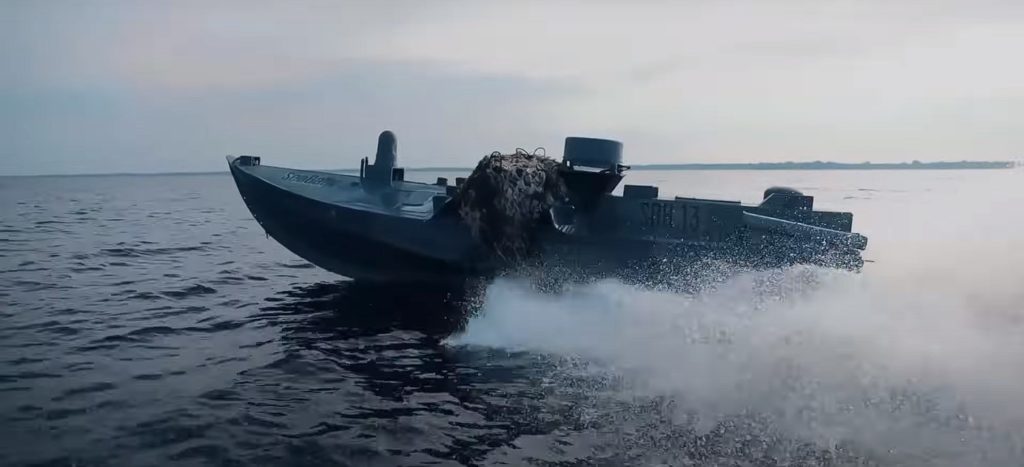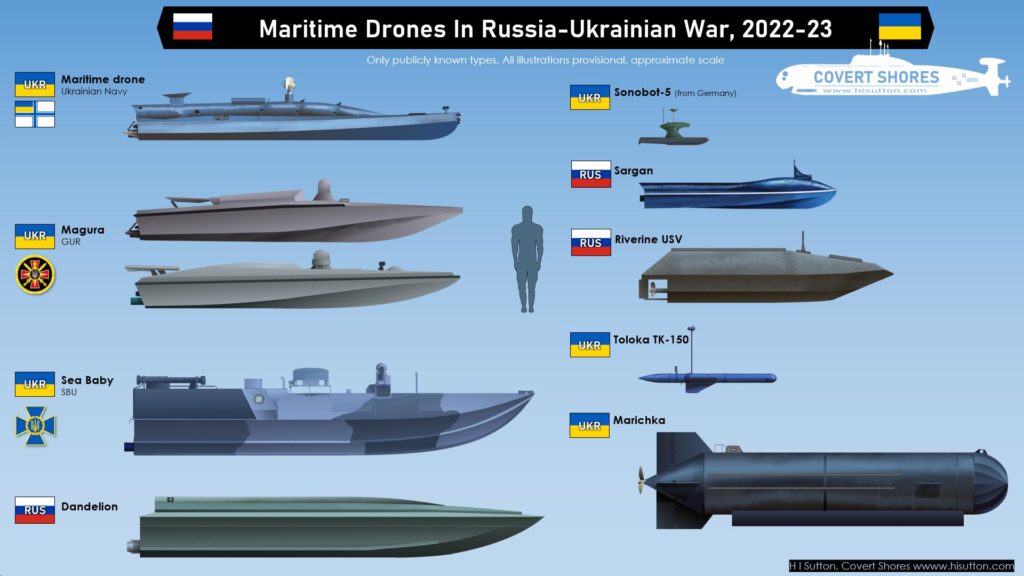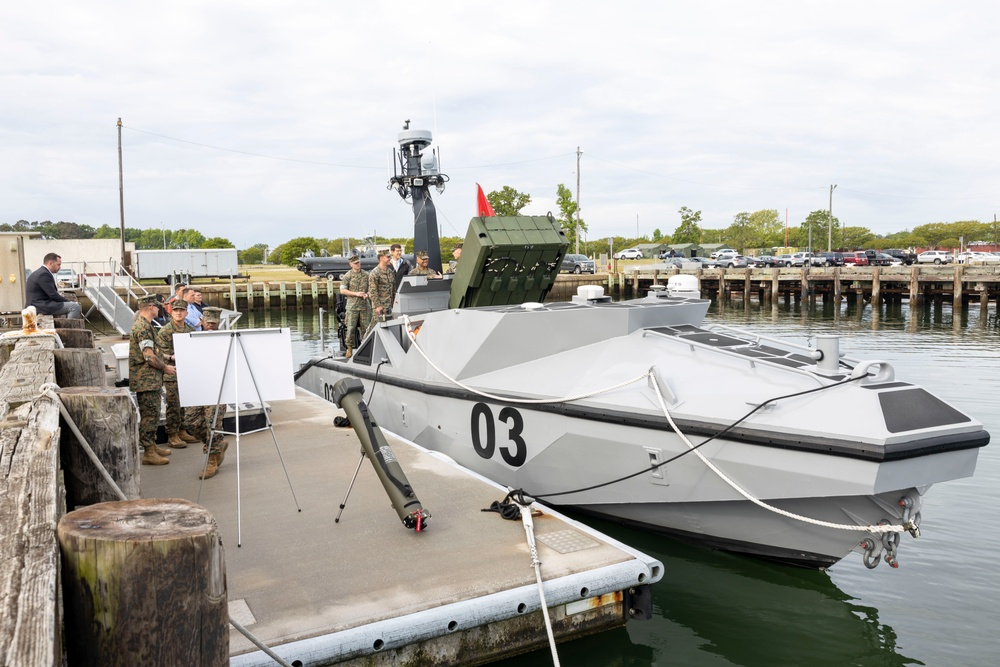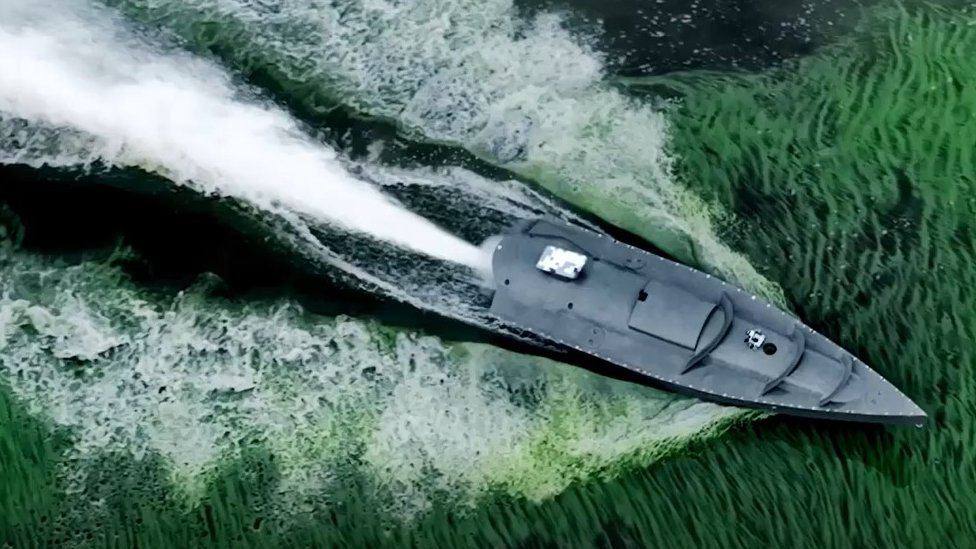Ukraine, a nation with sea access but lacking a fleet, achieved an extraordinary feat by neutralizing Russia's Black Sea Fleet.
Moscow had employed its ships to block Ukraine's sea access and launch missile attacks. Faced with urgency and limited resources for a fleet, Kyiv pursued an unconventional approach: creating, producing, and utilizing its groundbreaking maritime drones, marking a unique global milestone.
Amid numerous challenges, Elon Musk's unexpected role added a surprising twist to this innovative endeavor. During the first naval drone attack on a Russian ship Musk deactivated Starlink, the drone control system. Despite the setback, developers gained valuable insights into communication and navigation. A year later, Volodymyr Zelenskyy declared an end to Russia's dominance in the Black Sea.
Ukrainian maritime drones embody a classified innovation, leading to limited available information. Nevertheless, Ukrainska Pravda successfully interviewed several authorized sources, and based on this, along with other references, Euromaidan Press compiled all available information on the Ukrainian fleet of naval drones.
Ukraine's naval journey: from losing ports to sinking warships
"Before the war, sea freight accounted for 60% of Ukraine's total cargo turnover. We had 18 seaports. After the occupation of Crimea, only 13 remained. Our entire industry depended on the sea," explained Yuriy Vaskov, Deputy Minister of Infrastructure.
Russia began blockading Ukraine well before the invasion, pressuring trade ships passing through the Kerch Strait. Since mid-2021, Russia escalated its naval presence in the Black Sea's northwest, declaring constant ‘drills’ that limited Ukraine’s maritime access.
In the early hours of the full-scale invasion on 24 February 2022, Russian forces seized Zmiinyi (Snake) Island, providing control over all maritime traffic to and from Ukraine. Yet Ukraine's Navy, lacking big ships but having domestic Neptune missiles, soon started sinking Russian beach landing hopes. The missiles, improving over time, sank Russia's Black Sea flagship Moskva in April 2022, leading to Zmiinyi Island's liberation two months later.

Naval operations were halted on 22 July 2022 due to a “grain deal” allowing the export of Ukrainian agricultural products through Black Sea ports.
"In March 2023, the effectiveness of the corridor began to decline. It became clear that its continuation was unlikely. In July, the Russians withdrew from the agreement," recalls Vice Prime Minister Oleksandr Kubrakov.
On 17 July 2023, Ukraine attacked the Crimean Bridge over the Kerch Strait with naval drones from the Security Service of Ukraine (SBU) and Navy for the first time.
Ukrainian drones transform naval tactics
Ukraine's naval drone era began by chance when a Brigadier General at the SBU with the call sign Hunter noticed the potential of repurposing communication technology from conventional drones for maritime use.
"And I see that Starlink is standing on a large cargo drone. If you can do this with a flying drone, why can't we make a boat and send it to blow up Russian ships?” recalls Hunter.
The SBU engaged the Navy's help since they lacked naval expertise. The Commander of the Naval Forces, Oleksiy Neizhpapa, selected a consultative team from among his subordinates. They helped with calculations and taught drone operators to overcome storms and chart routes.
"We realized that with a drone, we could not sink a large ship, but we could completely disable it for a long time. And already in July 2022, we had the first serious tests, our boats traveled 200-300 km," Hunter said.

In September 2022, the first drone test on Sevastopol encountered challenges, including the disconnection of Starlink by Elon Musk over occupied Crimea. The communication was abruptly cut off 70 kilometers from the Russian frigate Admiral Makarov, the flagship of the Russian Black Sea Fleet at that time. This highlighted the critical importance of resilient communication systems.
In the fall of 2022, the Russians began massive shelling of Ukraine from ships in the Black Sea. So they had to be destroyed.
On the night of October 28-29, 2022, modified Ukrainian drones set sail towards Crimea. Four vessels headed for Sevastopol, and three went south toward the Admiral Makarov. A Ukrainian drone struck the right side of the frigate, catching the its crew off guard. Panicking, the crew headed for Sevastopol Bay, hindered by two pursuing drones and engine failures.
Simultaneously, another group of Ukrainian drones infiltrated Striletska Bay. However, the Russians were ready for this: a huge spotlight flashed in the bay, and they opened fire. One drone severely damaged the Russian minesweeper Ivan Golubets, and others hit an oil storage facility.
https://twitter.com/i/status/1742612745340572104
The damaged Admiral Makarov approached Striletska Bay, prompting Russian coastal artillery to unintentionally fire at their own flagship. A shootout ensued between their forces.
Meanwhile, other Ukrainian drones breached Sevastopol Bay, where Russians activated electronic warfare capabilities. Communication was minimal, relying solely on optical channels. Nonetheless, one drone managed to slip between the patrol ships Ladny and Admiral Essen, causing minor damage to both.
“It was the first remote maritime operation in history. Then we realized that surface drones should be larger and carry more explosives to be effective,” one of the developers said.
The SBU upgraded their drone, aiming for increased speed, size, power, and a different communication system. The combat unit grew from 108 to 850 kilograms, incorporating top-notch communication systems valued at over $300,000 each. The drone's hull was crafted from radar-absorbing material, and it features a flamethrower system for naval combat. However, a delicate balance is crucial due to their small size and tonnage, making them susceptible to waves.

This improved model is called SeaBaby. It made headlines by striking the Crimean Bridge on 17 July 2023. Its record includes targeting Russian missile carriers Samum and Pavel Derzhavin, the military tugboat Nikolai Muru, and the reconnaissance hydrographic ship Vladimir Kozitsky. Yet, SeaBaby's versatility is key, serving in roles like remote mining.
“We want to break down a large warship into its functions - air defense, strike weapons, defense systems - and put this weaponry on several drones,” Hunter explained.
Concurrently, Ukrainian Intelligence's Magura project, in collaboration with a private firm, introduced a 5.5-meter boat that excelled in surveillance and engagement.
'Faster than anything else in the Black Sea': See Ukraine's latest sea drone https://t.co/P8j2y7uD06 pic.twitter.com/uT6n95UFAl
— CNN International (@cnni) July 29, 2023
In September 2023, Magura successfully turned off the Russian patrol ship Sergei Kotov. However, surface drones face vulnerability during the target approach.
“They are easy to shoot down with artillery fire, small arms. If they were placed at least a meter underwater, the effectiveness of artillery and small arms would decrease dramatically," Navy Captain 1st Rank Pavlo Lakiychuk explained to Suspilne.
To address this, Ukraine is developing underwater drones. The Marichka model, torpedo-like, boasts the capability to destroy targets from over 1000 km away while lying in wait. Lakiychuk suggests potential roles as a tug and carrier for divers and special forces.
Another underwater drone, Toloka (TLK-150), measures 2.5 meters and is equipped with cameras on a high mast, potentially functioning as a periscope. Additionally, Ukraine has plans for larger drone models - TLK-400 and TLK-1000.

Trending Now
The Ukrainian Navy formed the 385th separate brigade of naval unmanned systems for special purposes, focusing on versatile drones to consolidate efforts.

Ukraine strikes Novorossiysk, sends bold message to Russia
After Russia withdrew from the grain deal in July 2023, it resumed attacks on Ukrainian ports in Odesa Oblast, reinstating the blockade. Kyiv responded with a plan involving two naval objectives: securing a new grain corridor and neutralizing Russian missile-carrying ships.
On the night of August 3-4, a new Ukrainian drone, an experimental model named Mamai, set sail. Mamai, functioning as a pure “kamikaze,” had a smaller combat unit (450 kilograms) than SeaBaby but was the fastest drone, capable of reaching almost anywhere in the Black Sea. It was dispatched to the Russian port of Novorossiysk, where Black Sea Fleet ships had taken refuge following Ukrainian drone attacks. Moreover, Novorossiysk held strategic importance as the hub of Russian maritime trade.
"Along the way, the drone operators saw a Russian tanker. They asked if they could target it. No tankers! Your target is the port," said one of the mission commanders.
When the Mamais entered the port of Novorossiysk, the large landing ship Olenegorsky Gornyak came to meet them unexpectedly.
https://twitter.com/i/status/1687370535699726337
A day later, the Mamai got the Sig tanker, which was directly involved in serving the Russian Defense Ministry. Thus, Russia received a message that a war in the ports could be played by two.
https://twitter.com/i/status/1719279262178464255
"The Russians are also not interested in any maritime incidents. This leads to more expensive insurance and freight. The entire Black Sea is one region for global insurance companies," explained Deputy Minister of Infrastructure Vaskov.
Novorossiysk, a significant oil transshipment point, facilitates the export of Kazakh oil by American oil giants. Additionally, it serves as a hub for the ‘gray’ export of Russian oil under different labels. Given the high stakes, Ukraine faced ‘warnings’ from partners at various levels. Nevertheless, the strategy proved successful, relaxing Russian pressure, and on 10 August 2023, Ukraine announced the opening of its maritime corridor.
Ukraine forges ahead with its own maritime corridor
On 16 August, the container ship Joseph Schulte departed Odesa. It has been there since 23 February 2022.
The Russian invasion forced ships carrying agricultural products to leave Ukrainian ports during the grain deal. However, container ships and those transporting iron ore remained. They became the first to utilize the new Ukrainian corridor. To attract incoming ships, Ukraine encouraged companies to take a calculated risk for potential profits. The first ship to enter Ukraine was the Palau-flagged Resilient Africa.
“We provided mechanisms for state support and reduced insurance rates. And it worked - the companies went to sea and into our corridor. During the operation of this route, 10.6 million tons of cargo passed through it,” explained Deputy Minister Vaskov.
Beyond its symbolic significance, the corridor holds critical importance for Ukraine, potentially contributing to a 5-7% GDP growth in 2024.
Simultaneously, Russia developed new tactics to disrupt the corridor, such as remote sea mining with guided aerial bombs that explode when a ship passes over them.
Ukrainian military efforts focused on the second component of their task: destroying Russian missile carriers and pushing them out of Crimea. Initially, naval kamikaze drones hindered Russian ship movements, forcing them into Crimean ports. Subsequently, unique Ukrainian tactics played a role, with intelligence promptly detecting Russian ship entries into ports.
The Ukrainian military adeptly times their actions to intercept Russian ships. Utilizing swarms of drones—comprising electronic warfare, kamikaze, and armed variants—they systematically overpower and neutralize Russian air defenses at the designated port. Subsequently, high-precision cruise missiles strike the precise locations of the Russian ships, destroying eight vessels and the submarine Rostov-on-Don. Notably, Ukrainian naval drones, evolving beyond mere “kamikazes,” now return to bases post-mission.
"We are now witnessing how a $250,000 technological development allows us to defend against ships that cost $50 million or even $1 billion. Together, Ukrainians are making technological history," noted Vice Prime Minister Mykhailo Fedorov.
Head of Ukrainian intelligence, Kyrylo Budanov, emphasizes that naval drones serve as a deterrent rather than an offensive tool.
“The Russians destroy 60-70% [of naval drones]. That's true. There is nothing to hide here. But the remaining 30% is a problem for them,” Budanov wrote on Telegram.
The effective use of naval drones was evident in the 4 November attack on Kerch, where Ukrainian drones targeted the Russian missile carrier Askold, underscoring the absence of safe havens for Russian ships in Crimea.
“The Russians have already withdrawn all serious ships from Crimea, but this will not help them. There should be no Russian fleet in Crimea at all,” said SBU chief Vasyl Maliuk.
Ukrainian naval drones pioneer future trends
The concept of arming surface naval drones is still in its early stages, with a limited number of systems available. Ukrainian naval drones have showcased the significant potential of integrating weapons into such platforms.
The US has developed an unmanned surface vehicle named LRUSV, equipped with a unit of loitering Hero-120 munitions. Despite its small tonnage, the LRUSV is a semi-autonomous vessel capable of conducting long-range operations. Additionally, it can serve as a carrier for strike kamikaze UAVs, enabling reconnaissance and targeted strikes at sea and on land. According to the manufacturer, the loitering drone can remain airborne for an hour within a 60 km radius and carries a 4.5 kg high-explosive warhead.

China, with a focus on Taiwan, is also actively pursuing the development of drones with integrated weapons.
The increasing global interest in naval drones is expected to expedite their development and enhance the overall design.
Read more:
- Ukraine's SeaBaby naval drones can now engage in sea battles, not only carry explosivess
- Ukraine spymaster: Even 30% of naval drones that reach targets problem for Russia
- Ukraine's innovative naval tactics shifted balance of power despite lack of warships
- Zelenskyy: Ukraine to produce 1 million drones next year





